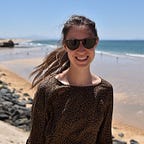Usability Evaluation and Site Redesign of Trip Advisor
In 2017, the world voted for the seven wonders of the new millennium. These are very touristic places that condense unique beauty and are prepared with many services for everybody to enjoy.
For my third challenge, I chose the Taj Mahal in the Indian city of Agra of the seven touristic destinations of the campaign New 7 Wonders of the World (started in 2000 from a selection of 200 existing monuments).
User Type & Research
Young couple — 20–40 y/o (2)
You and your partner decide to go to a special place next summer. You realize you have both saved enough for the tickets and are planning to save as much as possible for the next 6 months to do this trip. You want to be efficient and have everything you need organized to enjoy at 100% while there. Even if you’re young, you want to have special moments to celebrate being together.
Based on my audience reach, I focused on the user type of a young couple and researched any specifics for their trip to the Taj Mahal:
Most visitors arrive from the Indira Gandhi International Airport in Delhi (DEL) within an 8-hour-flight from Germany. The couple wants to stay in Delhi and therefore needs to go to Agra for their three-day-trip either by train or by plane. Different websites highly recommend visiting India between October and March. Even though there’s no code enforced at the Taj Mahal, blogs recommend dressing modestly. It’s recommended to wear light clothing, as it can get hot, especially when the sun is reflecting on the marble. Europeans need an e-visa (application at least 4 days before the journey). There is no mandatory vaccination for visiting India but some general vaccinations are recommended. In bigger cities, one can pay by credit card when going to smaller towns the exchange course is 1(Euro): 88.98 (Indian Rupees).
Benchmarking
I compared the three Apps Kayak, Skyscanner, Trip Advisor for my selected user type and context, conducting the Usability Heuristics evaluation with Nielsen’s Principles. Mainly, because of the category “Things to Do”, I chose the app Trip Advisor.
Testing
I used the research service created by UsabilityHub. Their various tests, such as first click tests, navigation tests, and five-second tests really simplify remote usability evaluations. The users' main tasks were searching for flights, searching for hotels, activity planning (trip to the Taj Mahal), and finding 3 beautiful restaurants nearby.
Insight
Through the conducted user interviews, different main friction areas and problems became clear:
- inconsistency of each screen
- inconsistency and positioning of the filter option
- floating action button doesn’t represent the primary action of the home screen
- home screen button has an explore icon and is marked as active during the whole user workflow
- confusing relation of text and image (“Things to Do” category)
- use of colors (yellow and red)
- no help with visa restrictions
The main problems I found during the interviews that I will focus on are:
Pain point #1: the inconsistency and positioning of the filter option between each screen.
My solution: implement the filter and map option next to the metadata (for example Check-in, Check-out, Guests).
Pain point #2: the options “share” a picture and “publish” a review aren’t the primary actions of the home screen. Therefore, a floating action button with these options isn’t the right choice.
My solution: move the floating action button into the tab bar (review section that contains write a review and share photos).
Pain point #3: the home screen button has an explore icon and is marked as active during the whole user workflow even though the users left the actual home screen and is several screens deep into a user flow.
My solution: Rename the section to “Explore”.
Redesign Wireframes
Conclusion
Rather than starting entirely new and ignoring what already works for users, I focused on the main pain points observed during the interviews. The interviews showed me that a lot of the existing parts of the UI are “good enough” for most users and incremental improvements are needed in the end.
I learned about UsabilityHub and their tool for usability evaluation. I highly recommend using it! The Nielsen principles are a very helpful technique for problem-solving. I found various inconsistencies in the app during the process and improved these. Conducting different user interviews is key for redesigning an app and for digging deeper in the right direction.
